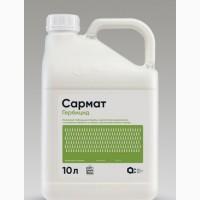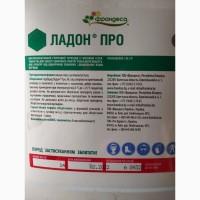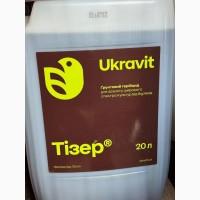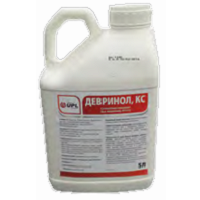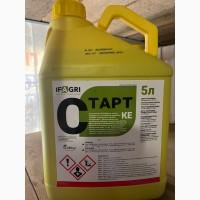Sell / buy
Simba - soil herbicide against annual cereals and some dicotyledonous weeds, Kyiv region.
Price12$
Region:all Ukraine,
Kyiv region region.
(Vyshhorodok)
Updated:
Simba herbicide - soil pre-emergence herbicide against annual cereals and some dicotyledonous weeds in crops of sugar beets, soybeans, corn,sunflower, rape and cabbage
Content of the active substance:
S-metolachlor, 960 g/l
Preparation form:
emulsion concentrate
The recommended consumption rate of the working solution: 152
200-400 л/га
Packaging: 5 liters, the price is for 1 liter. 156
Переваги препарату:
high efficiency against annual grasses and some important dicotyledonous weeds;
ensuring purity of crops at the earliest and most vulnerable phases of crop development;
long-term soil action (up to 8-10 weeks);
preventing the appearance of the second "wave" of cereal weeds;
possibility of use in tank mixtures with other herbicides;
no restrictions for the following crops in crop rotation.
Use of the drug:
Corn, sunflower, rapeseed, sugar beets, soybeans
The consumption rate of the drug, l/ha - 1.2-1.6
The method and terms of processing - Spraying the soil before sowing or before the appearance of crop seedlings
Cabbage
The consumption rate of the drug, l/ha - 1.2-1.6
Processing method and terms - Spraying the soil before planting seedlings(//tractor-service.com)
Recommendations for use:
In crops of sugar beets, sunflowers, corn, soybeans, and rapeseed, the soil is sprayed before sowing or before crop seedlings; on planting of seedling cabbage - 3-10 days after planting seedlings in the soil, seed cabbage - spraying the soil after sowing to seedling growth. In arid conditions, in order to preserve the high efficiency of the drug, it is recommended to carry out its shallow cultivation (by 2-3 cm).
The waiting period is 60 days.
Characteristics of the active substance:
S-metolachlor belongs to the class of chloracetamides, has a systemic effect.
Range of action:
Simba is effective against a wide range of annual grasses and some important types of dicot weeds. For example, high sensitivity to the drug is detected by: glainsoga (species), bitterchak (species),mustard field, humai (shoots from the rhizomes), star anise, white quinoa, black nightshade, common buckwheat, garden purslane, millet (species), chicken millet, chamomile (species), sundew (species), Aleppo sorghum, mouse (species), styrica (species), deaf nettle and others. Perennial weed species are resistant to the herbicide.
Mechanism of action:
The active substance penetrates mainly through the stem of the seedling, in cereal weeds - primarily through the coleoptile, and in dicots - through the cotyledons. The appearance of cotyledons is delayed, the sprout twists and then dies.
Speed and symptoms of exposure:
The herbicide works at the earliest stages of growth of weeds sensitive to it. Absorption of the active substance occurs in the germination phase of weeds and therefore causes death even before the appearance of their seedlings.
Period of protective action:
During a long period (up to 8 - 10 weeks).
The drug acts for a long time due to the creation of a herbicidal "screen" on the surface of the soil.
Phytotoxicity:
There is no risk of phytotoxicity if the application regulations are followed.
Compatibility:
Simba herbicide is compatible in tank mixtures with soil herbicides: Gaitan, Derox, Lazurite, Tornado 500, Tornado 540. In all cases, when preparing tank mixtures, it is necessary to check the physical and chemical compatibility of their components.
Content of the active substance:
S-metolachlor, 960 g/l
Preparation form:
emulsion concentrate
The recommended consumption rate of the working solution: 152
200-400 л/га
Packaging: 5 liters, the price is for 1 liter. 156
Переваги препарату:
high efficiency against annual grasses and some important dicotyledonous weeds;
ensuring purity of crops at the earliest and most vulnerable phases of crop development;
long-term soil action (up to 8-10 weeks);
preventing the appearance of the second "wave" of cereal weeds;
possibility of use in tank mixtures with other herbicides;
no restrictions for the following crops in crop rotation.
Use of the drug:
Corn, sunflower, rapeseed, sugar beets, soybeans
The consumption rate of the drug, l/ha - 1.2-1.6
The method and terms of processing - Spraying the soil before sowing or before the appearance of crop seedlings
Cabbage
The consumption rate of the drug, l/ha - 1.2-1.6
Processing method and terms - Spraying the soil before planting seedlings(//tractor-service.com)
Recommendations for use:
In crops of sugar beets, sunflowers, corn, soybeans, and rapeseed, the soil is sprayed before sowing or before crop seedlings; on planting of seedling cabbage - 3-10 days after planting seedlings in the soil, seed cabbage - spraying the soil after sowing to seedling growth. In arid conditions, in order to preserve the high efficiency of the drug, it is recommended to carry out its shallow cultivation (by 2-3 cm).
The waiting period is 60 days.
Characteristics of the active substance:
S-metolachlor belongs to the class of chloracetamides, has a systemic effect.
Range of action:
Simba is effective against a wide range of annual grasses and some important types of dicot weeds. For example, high sensitivity to the drug is detected by: glainsoga (species), bitterchak (species),mustard field, humai (shoots from the rhizomes), star anise, white quinoa, black nightshade, common buckwheat, garden purslane, millet (species), chicken millet, chamomile (species), sundew (species), Aleppo sorghum, mouse (species), styrica (species), deaf nettle and others. Perennial weed species are resistant to the herbicide.
Mechanism of action:
The active substance penetrates mainly through the stem of the seedling, in cereal weeds - primarily through the coleoptile, and in dicots - through the cotyledons. The appearance of cotyledons is delayed, the sprout twists and then dies.
Speed and symptoms of exposure:
The herbicide works at the earliest stages of growth of weeds sensitive to it. Absorption of the active substance occurs in the germination phase of weeds and therefore causes death even before the appearance of their seedlings.
Period of protective action:
During a long period (up to 8 - 10 weeks).
The drug acts for a long time due to the creation of a herbicidal "screen" on the surface of the soil.
Phytotoxicity:
There is no risk of phytotoxicity if the application regulations are followed.
Compatibility:
Simba herbicide is compatible in tank mixtures with soil herbicides: Gaitan, Derox, Lazurite, Tornado 500, Tornado 540. In all cases, when preparing tank mixtures, it is necessary to check the physical and chemical compatibility of their components.
|
Shop, contacts | |
Yuriy/ reviews, info. / activity evaluation | |
|
Phone:
+38(xxxxxx
show
| |
All user ads ~1000 | |
Ad ID: #1141098
(added by a registered user, registration date: 10-08-2016)
Added / Updated: 15-10-2025 09:08 (current, until: 10-15-2026)
Permanent Ad Address:
Impressions / views for today: ?, total: ?
Similar ads
Among them there are many interesting ones...

